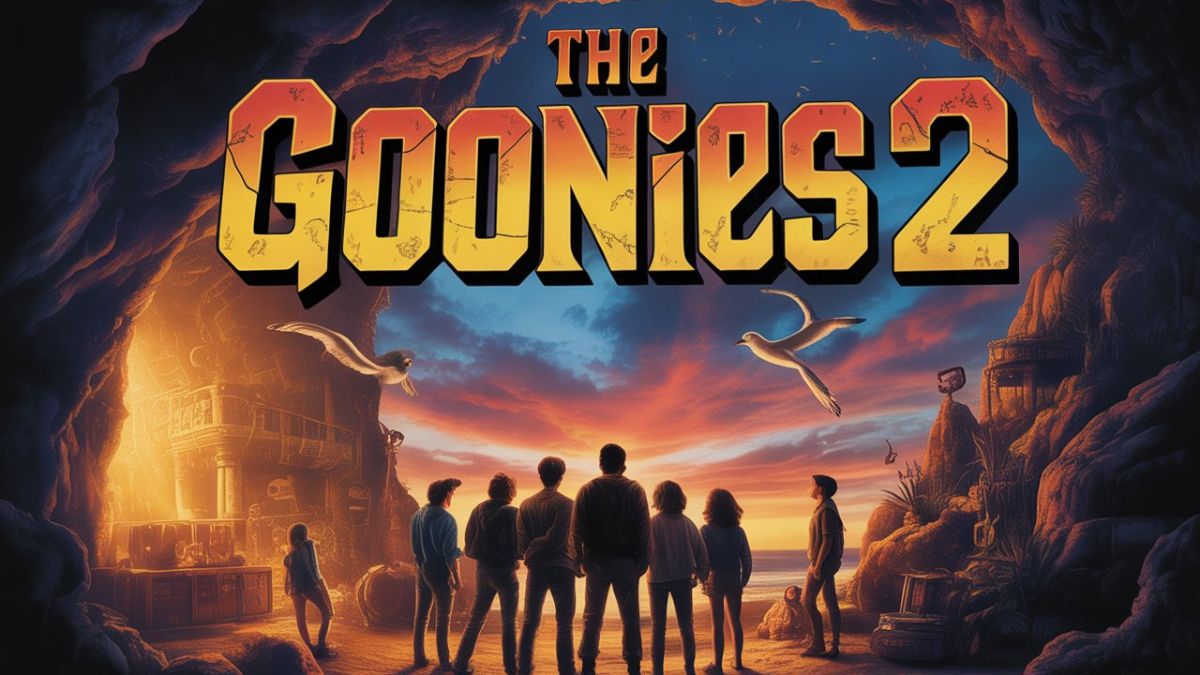In the ever-evolving world of video games, sequels often carry the weight of immense expectations. When a beloved title resonates deeply with players—whether through its storytelling, gameplay mechanics, or emotional impact—its follow-up becomes more than just another release; it becomes a cultural event. Such is the case with Goonierne 2, the highly anticipated sequel to the indie darling Goonierne, which quietly captured hearts with its quirky charm, atmospheric world, and emotionally resonant narrative.
While the original Goonierne may not have topped sales charts or dominated headlines upon its initial release, it cultivated a passionate fanbase drawn to its unique blend of melancholy, mystery, and whimsy. Now, years later, Goonierne 2 is poised to expand on that legacy with refined mechanics, a deeper story, and a world that feels both familiar and refreshingly new. This article explores every facet of Goonierne 2—from its development journey and narrative themes to its gameplay innovations and cultural significance—offering fans and newcomers alike a comprehensive look at what makes this sequel so compelling.
The Origins: From Goonierne to Goonierne 2
To understand the excitement surrounding Goonierne 2, one must first revisit the original Goonierne. Released as a passion project by a small indie studio, the first game introduced players to a surreal, dreamlike world populated by enigmatic characters and cryptic lore. At its core, Goonierne was a narrative-driven adventure that blended exploration, light puzzle-solving, and environmental storytelling. Its hand-drawn aesthetic and haunting soundtrack created an atmosphere that lingered long after the credits rolled.
Critics praised its originality, though some noted pacing issues and limited interactivity. Nevertheless, the game’s emotional depth and artistic vision earned it a cult following. Forums buzzed with theories about its ambiguous ending, and fan art flourished across social media platforms. It wasn’t long before fans began speculating about a sequel.
The developers, initially hesitant to revisit the world they had so carefully crafted, eventually confirmed Goonierne 2 after witnessing the sustained enthusiasm from the community. They emphasized that the sequel wouldn’t simply rehash the original but would instead build upon its foundation, addressing past limitations while preserving what made the first game special. This commitment to evolution over repetition has become a guiding principle in Goonierne 2’s development.
Narrative and Themes: A Story of Growth and Connection
Goonierne 2 picks up several years after the events of the original game. The protagonist—now older and more self-aware—returns to the strange, shifting landscape of Goonierne, drawn back by unresolved questions and a mysterious signal emanating from the heart of the world. Unlike the first game, which focused heavily on isolation and introspection, Goonierne 2 explores themes of connection, responsibility, and the passage of time.
The narrative is structured around a series of vignettes, each centered on a returning or new character whose life has been altered by the events of the first game. Players will encounter old friends who have grown in unexpected ways, as well as new allies whose stories intertwine with the protagonist’s journey. Dialogue choices and player actions influence how these relationships develop, adding a layer of emotional weight to every decision.
One of the most striking aspects of Goonierne 2’s storytelling is its use of environmental cues to convey backstory. Abandoned homes, overgrown pathways, and weathered journals all tell silent tales of what happened in the protagonist’s absence. This approach not only deepens immersion but also rewards attentive exploration—a hallmark of the series.
Moreover, Goonierne 2 tackles more mature themes than its predecessor. Where the original dealt with loss and identity in abstract terms, the sequel confronts grief, forgiveness, and the complexity of human (and non-human) relationships with greater nuance. It’s a story about learning to live with uncertainty while still reaching out to others—a message that resonates deeply in today’s world.
Gameplay Innovations: Building on the Past
While the original Goonierne was praised for its atmosphere, some players found its gameplay mechanics underdeveloped. In response, the developers of Goonierne 2 have significantly expanded the interactive elements without compromising the game’s contemplative pace.
Enhanced Exploration and Movement
One of the biggest improvements in Goonierne 2 is the fluidity of movement and exploration. The world is larger and more interconnected, with verticality playing a key role in navigation. Players can now climb, swing, and glide through environments, opening up new paths and secrets. This added mobility makes exploration feel dynamic and rewarding, encouraging players to revisit areas as they unlock new abilities.
Dynamic Puzzle Design
Puzzles in Goonierne 2 are more integrated into the narrative and environment. Rather than feeling like isolated challenges, they emerge organically from the world’s logic. For example, restoring power to an abandoned observatory might involve aligning celestial symbols based on clues found in nearby murals. These puzzles often require players to synthesize information gathered across multiple locations, fostering a sense of discovery and intellectual satisfaction.
Relationship Mechanics
Perhaps the most innovative addition is the relationship system. As players interact with characters, they build trust through dialogue choices, shared tasks, and small gestures (like returning lost items or remembering personal details). These relationships unlock new dialogue options, side quests, and even alternate endings. This system adds emotional stakes to gameplay, making every interaction meaningful.
Accessibility Features
Recognizing the diverse needs of modern gamers, Goonierne 2 includes robust accessibility options. From customizable text size and colorblind modes to adjustable puzzle difficulty and motion sensitivity controls, the game ensures that its story and world are accessible to as many players as possible. This inclusivity reflects the developers’ commitment to creating a welcoming experience for all.
Art, Sound, and Atmosphere: A Sensory Masterpiece
From its earliest teasers, Goonierne 2 has been lauded for its stunning visual and auditory design. The art style retains the hand-drawn charm of the original but with richer textures, dynamic lighting, and more detailed animations. Seasons change as the story progresses—autumn leaves give way to winter snows, which melt into spring blossoms—mirroring the protagonist’s emotional arc.
The soundtrack, composed by the same artist behind the original, blends ambient electronic tones with acoustic instruments to create a soundscape that is both ethereal and grounded. Music responds dynamically to player actions: a quiet piano motif swells into a full orchestral piece during moments of revelation, while silence is used just as effectively to convey tension or solitude.
Voice acting, a new addition to the series, is subtle and understated, avoiding melodrama in favor of authenticity. Many lines are delivered in hushed tones or fragmented sentences, reinforcing the game’s themes of communication and miscommunication.
Together, these elements create an atmosphere that is immersive without being overwhelming—an experience that invites players to slow down, observe, and feel.
Development Journey: Passion, Patience, and Community
The road to Goonierne 2 has been anything but straightforward. After the modest success of the first game, the development team faced the classic indie dilemma: pursue a sequel or explore new ideas? Ultimately, they chose the former—but only after extensive research, prototyping, and community engagement.
Early in development, the team launched a private beta for select fans, gathering feedback on everything from control schemes to narrative pacing. They also maintained an active blog, sharing concept art, design philosophies, and even failures. This transparency fostered a sense of co-creation, with fans feeling invested in the game’s evolution.
Funding was another challenge. Rather than seeking a publisher that might compromise their vision, the developers opted for a modest crowdfunding campaign, which was fully backed within 48 hours—proof of the community’s enduring support. This financial independence allowed them to take creative risks, such as implementing the relationship system and seasonal world changes, which might have been deemed “too niche” by larger studios.
Throughout development, the team remained committed to their core values: emotional honesty, artistic integrity, and player respect. It’s this dedication that makes Goonierne 2 not just a sequel, but a labor of love.
Cultural Impact and Fan Expectations
As release day approaches, anticipation for Goonierne 2 continues to grow. Online communities dissect every trailer frame, theorize about hidden lore, and share fan-made content ranging from music covers to short stories set in the game’s universe. What began as a niche indie title has blossomed into a shared cultural touchstone for players who value narrative depth and emotional authenticity in games.
Part of Goonierne 2’s appeal lies in its timing. In an era dominated by live-service games and cinematic blockbusters, it offers a quiet, reflective alternative—a space to breathe, think, and feel. Its emphasis on small moments over grand spectacle speaks to a growing audience hungry for meaningful experiences in interactive media.
That said, high expectations bring pressure. Some worry that Goonierne 2 might overcorrect by adding too many mechanics, losing the minimalist magic of the original. Others fear the story might not live up to the mystery that made the first game so compelling. The developers are well aware of these concerns and have repeatedly emphasized that Goonierne 2 is designed to honor the spirit of its predecessor while confidently stepping into new territory.
Why Goonierne 2 Matters
Beyond its artistic merits, Goonierne 2 represents a broader shift in the gaming landscape. It demonstrates that sequels don’t need to be bigger or louder to be better—they can be deeper, more thoughtful, and more human. In an industry often criticized for prioritizing profit over passion, Goonierne 2 stands as a testament to what’s possible when creators listen to their audience and stay true to their vision.
It also challenges the notion that “indie” means “limited.” With its expansive world, nuanced characters, and sophisticated systems, Goonierne 2 proves that small teams can deliver experiences that rival—or surpass—those of major studios. Its success could pave the way for more narrative-driven sequels that prioritize emotional resonance over marketability.
Moreover, Goonierne 2 contributes to the ongoing conversation about what games can be. It’s not just entertainment; it’s a medium for exploring complex emotions, building empathy, and reflecting on the human condition. In that sense, it joins a growing canon of games that blur the line between art and play.
Conclusion: A Journey Worth Taking
Goonierne 2 is more than a sequel—it’s a continuation of a conversation started years ago between creators and players. It builds on the foundation of the original while fearlessly exploring new emotional and mechanical territory. With its rich narrative, innovative gameplay, and breathtaking artistry, it promises an experience that is both deeply personal and universally relatable.
As we await its official release, one thing is clear: Goonierne 2 isn’t trying to be everything to everyone. Instead, it aims to be something meaningful to those willing to listen, explore, and feel. In a world increasingly defined by noise and haste, that quiet sincerity may be its greatest strength.
Whether you’re a longtime fan of the original or a newcomer drawn in by its reputation, Goonierne 2 invites you into a world where every shadow holds a story, every choice matters, and every moment—no matter how small—has weight. And in doing so, it reaffirms why we play games in the first place: not just to escape, but to connect.
So when Goonierne 2 finally arrives, don’t rush through it. Take your time. Listen to the wind in the trees, read the notes left behind, and talk to the strangers who might become friends. Because in the end, Goonierne 2 isn’t just about solving puzzles or reaching an ending—it’s about understanding what it means to be part of something larger than yourself.












